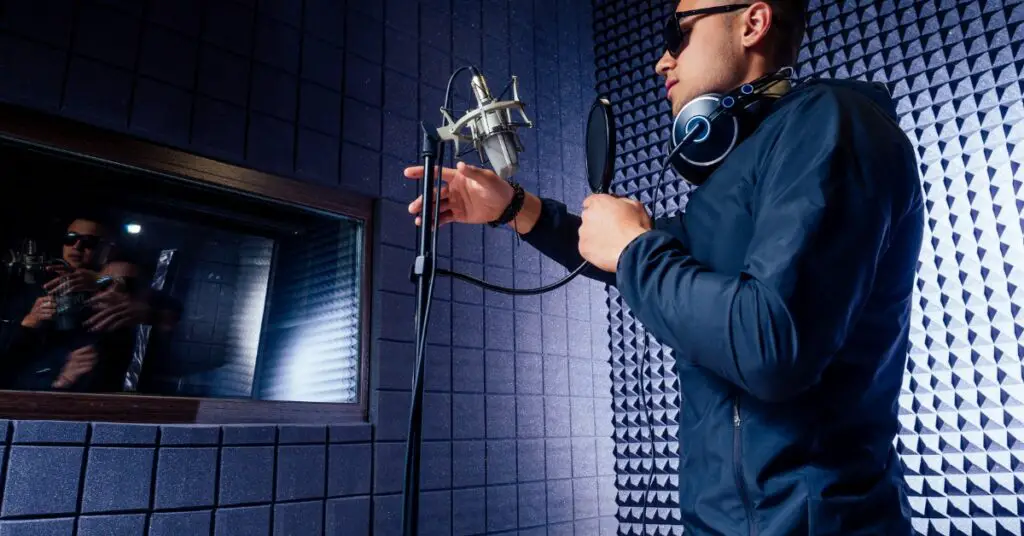
When recording audio, whether it's for a song, podcast, or any vocal performance, one common challenge that affects sound quality is sibilance. This phenomenon, characterized by a harsh, hissing sound on certain sibilant consonants, can distract listeners and detract from the clarity of the voice. Understanding and controlling sibilance is crucial for achieving professional-level audio. In this blog, we'll dive into what causes sibilance, its impact on audio production, and practical ways to reduce it, ensuring your recordings are clear and pleasant to listen to. Let's dig in.

Sibilance refers to a pronounced hissing sound that occurs in vocal recordings. It's most notable on "s" and "sh" sounds. These sibilant sounds are natural but can become problematic in recordings.
Several factors contribute to sibilance. Microphone technique plays a significant role; how close someone is to the microphone can amplify these hissing sounds.
The unique characteristics of a person's voice also affect sibilance. Some voices naturally emphasize higher frequencies, making sibilance more pronounced.
Lastly, the recording environment matters. Rooms with certain acoustics can accentuate sibilant frequencies, complicating the recording process.
Audio recordings are littered with sibilance examples. Whether it's the hiss in a singer's ballad or the sharp articulation of a podcast host, recognizing these instances is the first step toward effective management. Below is a table detailing common examples of sibilant sounds in various contexts.
| Context | Non-Sibilant Example | Sibilant Example |
|---|---|---|
| Vocal Recording | Open vowels (a, e, o) | Soft 's' (as in 'sail') |
| Spoken Word | Breathy sounds (h, f) | Sharp 'sh' (as in 'she') |
| Music Performance | Muted strings | Bright cymbals |
| Everyday Speech | Murmured 'm' and 'n' | Intense 'z' (as in 'buzz') |
Sibilance can have a harsh impact on the overall sound of a recording. It can cause distraction, making listeners focus on the hissing rather than the content. Overly sibilant audio can also be uncomfortable to listen to, especially at higher volumes or with headphones. In a nutshell, it can be ear-piercing.
In music production, clear vocals are essential for a polished track. Sibilance detracts from this clarity. For podcasts and voice-overs, where the voice is the main focus, controlling sibilance is crucial. It ensures the message is delivered clearly, without auditory distractions.

Proper microphone placement is key. Position the microphone slightly off-axis to the mouth to avoid direct sibilant sounds. Using a pop filter can also help. It diffuses the air from sibilant sounds before hitting the mic. Coaching the talent on softer pronunciation of sibilants can also make a big difference.
Once you've recorded, there are several ways to reduce sibilance in the mix.
Related Article: Top 5 Best De-esser Plugins: Say Goodbye to Sibilance!
As you've learned so far, managing sibilance effectively requires a blend of good recording practices and post-production skills. Here is a checklist of best practices to help you achieve clear, sibilance-free audio:
By following these practices and staying mindful of sibilance throughout the recording and production process, you can greatly improve the clarity and quality of your audio projects. Remember, controlling sibilance is as much an art as it is a technical skill.
De-essers are audio processing tools designed to reduce sibilance. They work by compressing the volume of sibilant frequencies whenever they exceed a certain threshold, making the sound less harsh.
Yes, dynamic EQ and multiband compression are advanced alternatives that offer more precise control over sibilant frequencies, allowing for nuanced adjustments.
Listen to your recording on different playback systems, including headphones and speakers. If the "s" and "sh" sounds are uncomfortably prominent on multiple systems, you may have excessive sibilance.
While software plugins like de-essers and dynamic EQs can significantly reduce sibilance, they can't completely get rid of it without affecting vocal quality. The goal is to control, not eliminate, sibilance for a natural sound.
Yes, in moderation, sibilance can add clarity and presence to vocals, enhancing articulation in a mix. The key is to balance it properly within the audio production. The truth is, without sibilance, a vocalist would sound like they have a lisp.
Understanding and controlling sibilance is essential for producing high-quality audio. When dealing with any vocal content, managing sibilance can elevate the clarity and professionalism of your recordings. By applying the techniques and best practices outlined in this blog, you can minimize harsh sibilant sounds and ensure your audio projects are a pleasure to listen to. Experiment with different strategies to find what works best for you and your specific audio needs. Remember, great sound starts with attention to detail, and mastering sibilance is a key part of that process.
If you found this guide helpful, please consider subscribing to our blog for more music production tips, product reviews, and buying guides. Also, you can support new content by contributing to our tip jar.
"Some of the links within this article are affiliate links. These links are from various companies such as Amazon. This means if you click on any of these links and purchase the item or service, I will receive an affiliate commission. This is at no cost to you and the money gets invested back into Audio Sorcerer LLC."